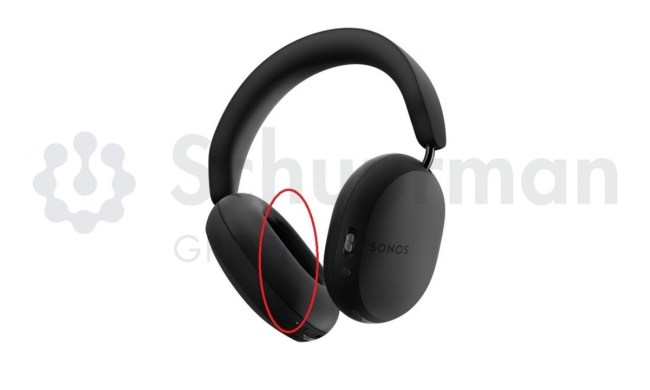“Though we prefer the look of Sonos and the price of Logitech, Linksys produces a quality competitor.”
- Good streaming quality; multi-format audio support; compact
- Not as stylish as Sonos; costs more than Squeezebox Boom; controller feels chintzy
Summary
Sonos, watch your back. Last year, Logitech released the Squeezebox Boom, one of the best media streamers we’ve tested for Multiroom music at a low overall cost with built-in speakers. Now, Linksys (er, "Linksys by Cisco" – a name-change only a marketer could love) has jumped into the pit. With the package price the same as the Sonos, and features that are remarkably similar, the Linksys Multiroom Home Audio System is easy to setup and use, performs well over 802.11n, and has a subtle, compact design that fits well in either an upscale Seattle apartment or a suburban bedroom. It’s a functional and well-designed product, but perhaps a little too geeky for some music fans.
Features and Design
The entire Multiroom Home Audio package consists of several bundled kits; each product is available separately as well. The Premier kit ($1000) consists of the Director and IR Remote, one Player and IR Remote, and the Wireless-N Controller. The Trio ($850) includes two players, two remotes, and the controller. The Executive ($550) is for those who live in a home with dark-paneled walls and a Lexus in the garage (pronounced "gai-rage") – it includes just the Director, a remote, and two speakers. There’s also a package that includes a small, trained ferret and two-dozen chilled oysters on the half-shell (not really). Linksys learned an unfortunate tip from Microsoft and the Vista marketing campaign – a single bundle and individual products would have sufficed. You can’t mix and match streaming media gear from multiple companies, since that would be too easy. Just to keep you guessing, there’s also an iPod speaker dock ($80) and an as-yet-unavailable Conductor (price TBD), which has built-in speakers.

Linksys by Cisco Wireless Home Audio System
That’s just a description of all the gear. Getting everything setup is really easy. You connect each device on by one with an Ethernet cable to your router. The Linksys setup program shows an animation of how to connect and configure each unit. You also have to install a Cisco media player program, which is a far cry from Apple iTunes but suitable enough – it’s obviously as version 1.0 product. The program watches music folders on your PC or a server and refreshes the content automatically. We can’t imagine using it as a primary tool, and you can’t buy any songs. It’s mostly a config-and-forget tool.
Once up and running, each component then connects over Wi-Fi using 802.11n, a more robust networking protocol than 802.11g and one that can cover your whole house in 100Mbps networking goodness. You do need your own 802.11n router; Linksys recommends their own WRT610N.


Still, the Linksys music gear sounds fantastic. The speaker kit is only passable in sound quality for the price (we thought Bruce Springsteen sounded a bit frail and boxy), but when we connected the device to our own NHT bookshelf speakers, we more were impressed. The Director has 50 watts of power per speaker, so you can really crank it up. The Multiroom system supports quite a few formats, including FLAC Lossless, AIFF, WAV, PCM, MP3, AAC, AAC+, Ogg Vorbis, and MP2. You can play raw uncompressed audio files and most flavors of MP3. In several tests, we never had any jittery audio or connection problems. The system also supports the Rhapsody audio service, which is a good perk. Now that Apple iTunes Store lets you buy unprotected audio, it opens up a world of music possibilities. The iPod speaker dock is a handy extra, and you can access your iPod collection with the Controller remote.
Conclusion
After a long commute, when you’re ready to chill out with some early Radiohead or disrupt the neighborhood with the new Underoath release, Linksys has you covered. The Multiroom Home Audio System is expandable, works well, and supports a wide variety of formats. We’re not big fans of the design – it’s a little too Euro-techie for us. For roughly the same price, the Sonos looks more stylish in every room, and works about the same (and we’ve even seen some amazing deals on the Sonos). The Logitech Squeezebox Boom and Duet models are also much cheaper. Sure, imitation is flattery – but there’s no amazing new feature or a noticeable uptick in audio quality on the Linksys music system that makes it a must-buy compared to the already well-established competition.

- Good streaming quality
- Multi-format audio support
- Compact
Cons:
- Not as stylish as Sonos
- Costs more than Squeezebox Boom
- Controller feels chintzy
Pricing
Premier Kit – $999.99
Trio Kit – $849.99
Executive Kit – $549.99
Conductor – Pricing not available
Director – $449.99
Player – $299.99
Stereo Speaker Kit – $149.99
Controller – $349.99
iPod Dock – $79.99
IR Remote – $29.99



